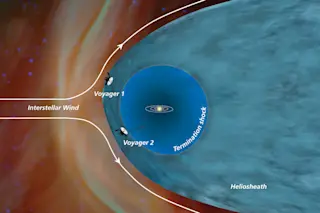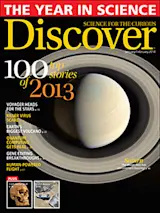It took more than 35 years and a journey over 15 billion miles, but: “Voyager 1 is the first human-made object to make it into interstellar space — we’re actually out there,” says Don Gurnett, lead author of a September Science paper announcing the feat.
The probe first gained fame in the 1970s and ’80s with visits to the solar system’s outer planets; it’s been racing toward this next milestone ever since. In recent years, various scientists had prematurely trumpeted Voyager 1’s crossing into interstellar space, the area dominated by gas ejected from other stars. This time, however, NASA’s scientists are sure, thanks to three key pieces of evidence — two of which were published earlier in 2013.
First, astronomers announced that Voyager 1 had recorded a steep drop in the “solar wind,” a stream of charged particles emanating from the sun. At the same time, the spacecraft also detected ...















